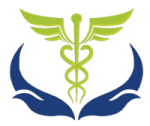Description
AMERICAN HEART ASSOCIATION (AHA)
CPR CLASSES
Please note: Participants should dress comfortably for class. Be
prepared to practice and demonstrate skills while kneeling on the
ground.
Advanced Cardiovascular Life Support
(ACLS)
The AHA’s ACLS course builds on the foundation of lifesaving BLS skills, emphasizing
the importance of continuous, high-quality CPR.
Which course is right for me?
ACLS or ACLS for Experienced Providers
ACLS:
For healthcare professionals who either direct or participate in the management
of cardiopulmonary arrest or other cardiovascular emergencies and for personnel
in emergency response
What does this course teach?
Basic life support skills, including effective chest compressions, use of a bag-
mask device, and use of an AED
Recognition and early management of respiratory and cardiac arrest
Recognition and early management of peri-arrest conditions such as
symptomatic bradycardia
Airway management
Related pharmacology
Management of ACS and stroke
Effective communication as a member and leader of a resuscitation team.
Basic Life Support (BLS) (Healthcare Providers)
The AHA’s BLS course trains participants to promptly recognize several life-threatening
emergencies, give high-quality chest compressions, deliver appropriate ventilations and
provide early use of an AED.
Who should take this course?
The AHA’s BLS Course is designed for healthcare professionals and other personnel
who need to know how to perform CPR and other basic cardiovascular life support skills
in a wide variety of in-facility and prehospital settings.
What does this course teach?
High-quality CPR for adults, children, and infants
The AHA Chain of Survival, specifically the BLS components
Important early use of an AED
Effective ventilations using a barrier device
Importance of teams in multirescuer resuscitation and performance as an effective team
member during multirescuer CPR
Relief of foreign-body airway obstruction (choking) for adults and infants
Heartsaver ® First Aid CPR AED Training
The AHA’s Heartsaver First Aid CPR AED course trains participants to provide first aid,
CPR, and use an automated external defibrillator (AED) in a safe, timely, and effective
manner.
Who should take this course?
The AHA’s Heartsaver First Aid CPR AED Course is designed for anyone with little or
no medical training who needs a course completion card for their job, regulatory (e.g.,
OSHA), or other requirements, o anyone who wants to be prepared for an emergency in
any setting.
What does this course teach?
First aid basics
Medical emergencies
Injury emergencies
Environmental emergencies
Preventing illness and injury
Adult CPR and AED use
Opioid-associated life-threatening emergencies
Optional modules in Child CPR AED and Infant CPR
Heartsaver ® First Aid Training
The Heartsaver First Aid course trains participants first aid basics for the most common
first aid emergencies, including how to recognize them, how to call for help, and how to
perform lifesaving skills.
Who should take this course?
The AHA Heartsaver First Aid Course is designed for anyone with limited or no medical
training who needs a course completion card in first aid to meet job, regulatory, or other
requirements.
Heartsaver ® Bloodborne Pathogens
Training
The Heartsaver Bloodborne Pathogens course teaches students how to protect
themselves and others from being exposed to blood or blood-containing materials. This
course is designed to meet Occupational Safety and Health Administration (OSHA)
requirements for bloodborne pathogens training when paired with site-specific
instruction.
Who should take this course?
The AHA Heartsaver Bloodborne Pathogens Course is designed for anyone with a
reasonable chance of coming into contact with bloodborne pathogens such as:
Correctional Officers, Childcare workers, Security guards, Maintenance workers, School
personnel, Hotel housekeepers, Health and fitness club staff, and Tattoo artists.
What does this course teach?
This course uses the PACT acronym (Protect, Act, Clean, Tell) and tagline, “Make a
PACT, Know How to Act™,” to help students learn and easily recall bloodborne
pathogens training.







Reviews
There are no reviews yet.